The Western Mystery Tradition
Neoplatonism, Hermeticism, and Kabbalah

The Western Mystery Tradition
The eight interconnected systems within the Western Mystery Tradition are: the ancient Mysteries, Neoplatonism, Hermetic philosophy, symbolic alchemy, Kabbalah, Western magic, Rosicrucianism and last but not least, Freemasonry and related fraternal organizations.
These eight systems all describe the story of the unfolding of the cosmos as a progressive degeneration of cosmic unity into plurality. They view the process of redemption as a reversal of this condition.
This return to the ultimate source of existence is the Hermetic transmutation or Great Work, the neoplatonic contemplation, the Kabbalistic Tikkun or ‘return’ to Godhead, the highest goal of medieval European magic, the Rosicrucian Art, and the meditation of the Masonic Craft.
It is also the samadhi of yoga, the nirvana of Buddhism and the Daoist alchemical return to the Source, which is pointed to in Science Abbey articles as “enlightenment” or “illumination.”
Other Science Abbey articles focus on the ancient Mysteries, Western magic, Rosicrucianism, and Freemasonry. The present article will focus on Neoplatonism, Hermeticism and the Kabbalah.
“The Hermetic-Kabbalistic tradition may be defined as the juxtaposition of Alexandrian Neoplatonism and Hebrew mysticism. The cosmopolitan environment cultivated by the Arabic golden age helped produce medieval Hermeticism and Kabbalah. These mystical traditions would be spread throughout Europe when the Jews were forcibly expelled from Roman Catholic Spain in 1492.
“The alchemist of the Middle Ages was usually a professed Christian, often a monk or clergyman, who studied what he could of Hermetic alchemy, Greek philosophy (especially Neoplatonism), the Jewish Kabbalah, and his own native and foreign magic. The Great Work of the alchemist, in emulation of the “Great Architect,” was to unite the divine opposites, macrocosm and microcosm, to produce a unified and balanced whole.”
From “Magic and Science: Origins of Western Alchemy Part II”

Neoplatonism
Neoplatonism was the most mystical school of Greek philosophy. It is known as super-rational mysticism and as such is considered to be the culmination of Classical Greek philosophy.
By tradition, the Neoplatonist school was founded by Ammonius Saccus in second century Alexandria, Egypt, about whom not much is known. Among his pupils was Plotinus (b.204, d.270 CE) who is known as the primary theorist and founder of the movement.
Plotinus was born in Egypt, raised and educated according to Greek culture, and lived under the rule of the Roman Empire. His student Porphyry published Plotinus’s writings in The Enneads, and Plotinus’s student Iamblichus became a leading figure in Neoplatonic philosophy.
Alexandrian Neoplatonists based their mystical philosophies mainly on the Hermetic texts and the writings of Plato. These Neoplatonists rejected dualistic interpretations of Plato, which focused on the polarity of the universal and the particular. They perceived the universe as a unity containing four planes of existence.
From the absolute One emanated the Divine Mind or Logos, the World-Soul, and the material world. Sin was conceived of as man, on the lowest plane, turning away from the One.
The Neoplatonists developed theurgy, or divine working, to achieve henosis, mystical oneness. The philosopher could rise up through the planes of existence through moral virtue and intellectual contemplation, coming at last to absorption in the One, the mystical union.
The Neoplatonic ideas concerning the mystical ascent would later have an influence on Renaissance theologians and philosophers directly through translations of Plotinus, Porphyry and Iamblichus.
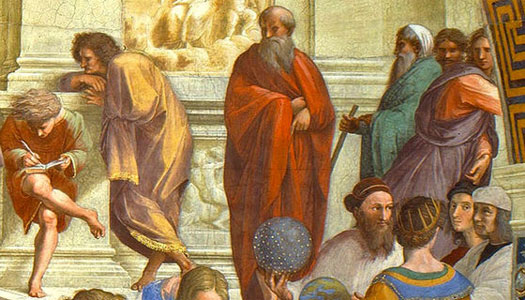
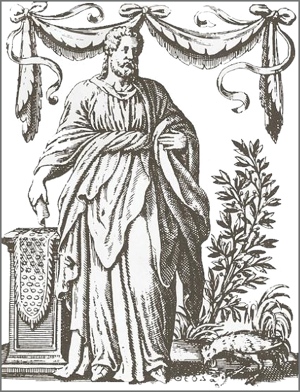
Hermeticism
The process of the mystical ascent is conveniently embedded in the allegorical language of chemistry and astrology, and symbolized by common chemicals and operations. In the West the mythological father of alchemy is identified as Hermes Trismegistus.
From ancient Egypt to Classical times the Egyptian god Thoth, associated with the Greek god Hermes and the Roman Mercury, evolved to encompass a vast number of attributes, but the consistent function of this deity was the dispensing of wisdom.
It was natural, then, that the European Renaissance philosophers that studied the writings attributed to Hermes Trismegistus of Alexandria should have imagined the legendary author to be the divine person of ancient Egyptian mythology, an historical individual contemporaneous possibly even with Moses.
Hermes Trismegistus or “Hermes the Thrice Great” of Alexandria, Egypt was thrice great as legislator, priest, and philosopher. He taught alchemy and magic, as well as gnostic and Neoplatonic concepts. Egyptian-Greek teachings with Hebrew and Christian influences, attributed to Hermes Trismegistus, were written in the second and third centuries of the Christian Era.
This Alexandrian syncretic philosophy was transmitted through a collection of dialogues called the Hermetica. This body of work was intended as knowledge that led to the union of man (gender neutral Homo sapiens) and God.*
The most famous of these works are the Poimandres (the “Shepherd of Man”) and the Emerald Tablet. The Emerald Tablet first appeared in Arabic around the seventh century and was translated to Latin in the twelfth century.
* Scott, Walter (ed., trans.) Introduction. Hermetica. Vol. 1. Boston: Shambala, 1985. 2 Volumes.
Read more: Early Alchemists of the West
Hermetic Meditation
A School of Hermetic Meditation
ARTICLE CONTINUES:

Ancient Hebrew Meditation
Meditation in the West as we know it today began with the ancient Hebrews as they contemplated the works of their god. Traditional Jewish Biblical meditation is a form of prayer called hagah (הגה). Hagah is the study of scripture and contemplation on G-d’s words and G-d’s works, which exercises and expands the mind.
Meditation is mentioned in the Psalms and other books of the Tanakh, written and compiled 600 – 400 BCE, and based on an oral tradition from 1,300 BCE.
Original translations from the Hebrew
JOSHUA 1:8
This book of the Torah (Law) shall not leave your mouth. You shall meditate on it day and night, so that you observe to do all that is written in it, for then you will succeed in all your ways, and then you will prosper.
PSALMS 1:2
But his happiness is in the law of the Lord, and in His law he meditates day and night.
PSALMS 63:7
When I remember You on my bed in the night watches I meditate about You.
PSALMS 77:12
I meditate over all of Your works and I speak of Your deeds.
When the Hebrew scriptures were translated into Greek in third century BCE Alexandria, Egypt, the Hebrew word haga was translated into melete.
The Old Latin texts, translations of the Septuagint before Jerome’s Vulgate Version, translated melete into the Latin meditatio (Psalm 118: 97) “Quam dilexi legem tuam: tota die haec meditatio mea.” “Oh, how I love your law: it is my meditation all day long.”
The English ‘meditation’ is derived from the Latin meditatio, from the verb meditari, meaning “to contemplate, think, ponder.”
The Hebrew word siach also means meditation, as in Psalm 119. The following excerpts are taken from the English New King James Version of the Christian Holy Bible:
PSALM 119 NKJV
15 I will meditate on Your precepts…
23 Princes also sit and speak against me, But Your servant meditates on Your statutes.
48 My hands also I will lift up to Your commandments, Which I love, And I will meditate on Your statutes.
78 Let the proud be ashamed, For they treated me wrongfully with falsehood; But I will meditate on Your precepts.
148 My eyes are awake through the night watches, That I may meditate on Your word.
The most advanced form of Jewish meditation was born in a mist of obscurity. Modern historians debate when and where the Kabbalah began. According to scholarship, its origins lie somewhere between the first and fourth centuries. Between the twelfth and thirteenth centuries the Kabbalah developed into a proper system of mystical ascent.
West meets East: Judaism and Zen
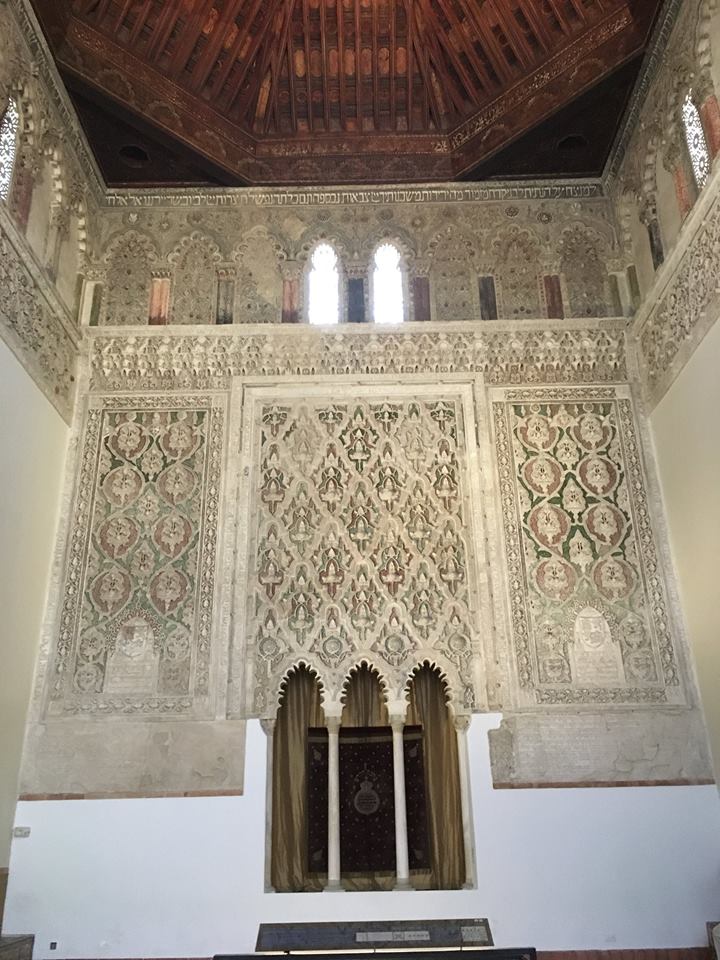
Origins of Kabbalah
Kabbalah, in Hebrew, קַבָּלָה, literally means “tradition.” It is the cherished Jewish mystical discipline that teaches the communion of an infinite God, Ein Sof (אֵין סוֹף) with its finite creation, the universe, through the mortal man. Kabbalah was adapted by Medieval Europeans to accord with Christian, Neoplatonic and Hermetic views. It thus became an integral part of the Western Mystery Tradition.
According to the Hebrew legend the Kabbalah was given by God to Adam, and was known by Abraham, Moses, and Solomon. Actually, the mystical tradition had its roots with the Jewish people who relocated to Alexandria, Egypt after the destruction of the Second Temple of Jerusalem around 70 CE. Esoteric Judaism developed with Hellenist, syncretistic or magical, and perhaps Persian influence during this first century of the Common Era.
Gershom Scholem, a leading historian of the Kabbalah, holds that the tradition may be described as the “product of the interpenetration of Jewish Gnosticism and neoplatonism.”*
The tradition took shape in the second century Sepher Yetzirah, the “Book of Creation.” Kabbalah crystallized into a mystical system in the twelfth century in Southern France and Spain, especially in the Book Bahir. It became popularized with the rabbinical literature of the Zohar, the “Book of Splendor,” written in thirteenth century Spain by Moses de Leon.
Elder Sages (Rishonim) of Judaism, like the distinguished Torah commentators Moses ben Nachman (Nahmanides or Ramban) (1194–1270) and Bahya ben Asher ibn Halawa (d. 1340), used the Kabbalah to understand the Torah. The French rabbi Isaac the Blind (c. 1160–1235), the “father of Kabbalah,” was a leading Kabbalist of the thirteenth century, as was his famous student Azriel of Gerona. Thus Kabbalah entered Europe to be studied by alchemists and those interested in magic and mysticism.
* Scholem, Gershom. Kabbalah. Markham, Ontario, Canada: Penguin Books Canada Limited. 1978.
Read a more detailed history of early Kabbalah

Kabbalah Cosmology and Method
The Kabbalah teaches balance with the diagram of the Tree of Life, the ten sefirot, emanations of the Ein Sof, the Infinite. There is balance with the three pillars upon which the sefirot hang; the Pillar of Mercy, Middle Pillar and Pillar of Strength or Judgment.
There is balance, as well, between the lowest sefirah, Malkuth or the Kingdom – the physical shell of the cosmos – and the highest sefirah, Kether, the Godhead or creative force of the cosmos, with Tiferet (“Beauty”) in the center, being the spirit or pure consciousness, the cosmic person.
Like Neoplatonism, the design of the Kabbalistic method follows the mystical ascent, with God as the Emanator of the four stages or planes of Creation, which the Jewish mystics identified as Emanation, Creation, Formation, and Manifestation. Man is born in the lowest plane, the physical, and is to reverse his sinful nature to return up the vertically aligned worlds to the Godhead.
Upon the four worlds hang the ten Sephirot, or Crowns, the attributes of God (derived from I Chronicles 29:11.) The Sephirot, collectively called the Tree of Life, are landmarks to guide man in his Mystical Ascent. The Kabbalist acts to unify the Sephirot through prayer and meditation on the Tree of Life.
The mystical ascent is described by the process of Tikkun, which means restoration or return, the quest for the everlasting communion between all creatures and God, the object of humankind. This cosmology is simply a technical description of the fall of Man from the Grace of God, and the method of acting toward the restoration of that Grace. The Kabbalah thus describes the Creation and the cosmic anatomy to map the relation between man and God.
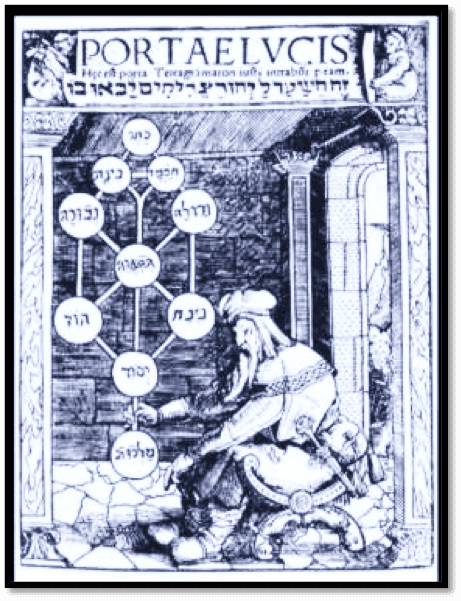
Kabbalah Cosmogony
The Kabbalah describes the Creation and the cosmic anatomy to design a context within which the relation between man and God might be mapped. The story of Creation began with Ain Soph, nothingness or vacuum, and zimzum, a contraction within Ain Soph that created the ten Sephirot.
The Sephirot took form in the Adam Kadmon, or primeval man, from whose forehead extended lights that aligned in complex patterns which are expressed by names. Each manifestation is, therefore, an expression of its name, and its name a special arrangement of the Hebrew letters.
The force of Creation damaged the seven lower Sephirot and from the separated pieces of the broken Sephirot grew the Kelippot, the husks or shells, which are the evil of Creation. Each of three planes had been displaced to the proper place of the plane below it, thus forming four planes.
The Kabbalists call the totality of the Sephirot the Tree of Life, for in it is contained all that is divine and eternal. Each Sephirah has its own unique power or function but is said to contain all the other Sephirot in miniature.
The lowest Sephirot exists on its own plane, the material, which has no active force in itself, but comprises the totality of the Sefirot. The story of Creation takes another bad turn when the primordial man Adam sins, mixing himself with the Kelippot, which exist only on the lowest plane. His sin separated what should have been united, by an act of disobedience, and all sin is a repetition of this error, except sorcery, which unites what ought to be separate, that is, divine power and base objects.
The three highest Sephirot, which had not been damaged, began naturally to guide the broken Sephirot back to wholeness or perfection with an influx of spiritual light. This is the process of Tikkun, which means restoration or return, and is the object of humankind, for it will achieve an everlasting communion between all creatures and God.
Humankind has a special mission because he alone exists in the physical plane, where God and angels are on the higher planes. It is only in the physical, where good meets evil, that good might overcome evil. Thus the sages act to unify the Sefiroth through prayer and meditation on the Tree of Life.
According the traditional Kabbalah, the whole universe is best defined by four planes, as sound is. The first plane is beyond existence, like silence, the absence of sound. This is the Divine Plane.
The second plane is the Plane of Creation, like phonation, the creation of a sound.
The third plane is the Plane of Formation, like resonance, the harmonic ordering of a sound into a note as opposed to unformed “noise.”
The fourth plane is the Plane of Manifestation, like the articulation of a sound into a word or words. As the singer of a song listens to herself for aural feedback to master her art, so the universe observes itself through living beings – observers – for feedback to master the art of being.
The Four Planes and the Tree of Life
י
God; Original Tree
Emanation One
Father
ה
Archangels and Angels
Creation Good
Holy Spirit
ד
Man
Formation Law
Son
ה
Physical World
Manifestation Universe
Kingdom
“Middle Pillar”/Equilibrium/Mildness
Pillar of Judgement/Severity Pillar of Mercy

The Tree of Life came to be used as a chart not just for the Sephirot, but for corresponding phenomena, and other lists, as well. The letters of the Hebrew alphabet, and later, other symbols, were assigned to the paths connecting the Sephirot.
The Sepher Yetzirah conceived 231 paths between the twenty-two letters, and assigned physical and moral direction to the ten points: Beginning, End, Good, Evil, Above, Below, East, South, West, and North. God was said to exist, however, beyond even these hyperquadrants of dimension and direction.

Gematria
Gematria is the assigning of numerical value to each letter of the alphabet and thus to words. The belief is that the number of a word reveals some esoteric quality in the word or the thing the word represents. Gematria was used in Mesopotamia in several forms before the eighth century BCE and in Greece by Pythagoreans by the sixth century BCE in the form used later by the Hebrew mystics (1-9, 10-100,100-900).
By the first century BCE the Jewish people were using Gematria as it is known today, as in the chart below:
1-A; 2-B; 3-G; 4-D; 5-H; 6-V; 7-Z; 8-Ch; 9-T;
10-I; 20-K; 30-L; 40-M; 50-N; 60-S; 70-O; 80-P; 90-Tz;
100-Q; 200-R; 300-Sh; 400-Th; 500-K final;
600-M final; 700-N final; 800- P final; 900-Tz final
The three “Mother Letters,” Shin, Alef, and Mem, were said to correspond with three elements, fire, air, and water, respectively. Mem was the “hand of merit,” Shin the “hand of liability (or sin),” and Aleph the “tongue of decree” which was the balance that weighed them.
Aleph was in the head of man, Shin on his lips, and Mem in his heart, as representative of heart, head, and word.
The sacred nature of the twenty-two Hebrew letters was acknowledged by the Midrashic authors and in Talmudic times rabbis saw mystical meanings in the shapes of the letters.
Every word and phrase of the Hebrew language was subject to mystical interpretation through Gematria, the practice of assigning spiritual meaning to numbers, and numbers to the letters of the alphabet, then interpreting the spiritual meaning of a word by the numerical value of its letters.
As an example, the Revelation of the Christian Saint John, written in the first century of the Christian Era, contains Kabbalistic symbolism; most notable is the “number of the Beast,” 666.
As a skeptic with a scientific mind one cannot readily concur with every assertion of any faith-based mystical system. Questions to ask in regards Kabbalah include: What are the correspondences between the Kabbalistic cosmology and the scientific world-view? Where does science disprove Kabbalistic claims?
Finally, what does a scientific Kabbalah assert to be the factual Creation Story and the meaning and process of Tikkun olam, the “restoration of the world?”
The English Kabbalah teacher Z’ev ben Shimon Halevi (1933-2020) recognizes that Kabbalah is re-emerging not as ancient dogma but as modern science and contemporary psychology. He sees a universal teaching in the mystical ascent of neoplatonism, shared by Kabbalah, Native American teachings and Eastern philosophies.
In this sense the Toledano tradition of Kabbalah is in complete alignment with science-based meditation. We should never be attached to any philosophy or doctrine. While we maintain our ancient traditions, we are always learning, ever changing our world-view to accord with new information derived from science and critical thinking. This is the only way we can overcome our misconceptions and cultivate our wisdom.
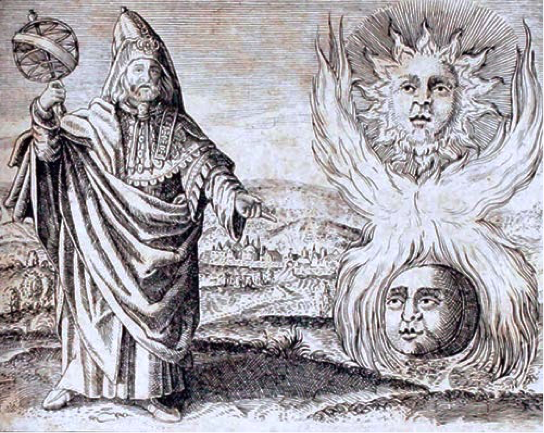
About the Author
I studied Kabbalah in my early teen years but my real introduction to the study of Kabbalah came when I was a Freemason in Washington, D.C. In 2004 I became a regular Master Mason of the Fraternity of Free and Accepted Freemasons in the District of Columbia. I received my thirty-second degree with the Alexandria Scottish Rite in 2009, proudly serving as candidate for the final degree. My wife and I were initiated into the Order of the Eastern Star in the District of Columbia.
I lived in Alexandria for a number of years as the Librarian and Curator at the George Washington Masonic Memorial. As librarian of the Washington Library at the Memorial, I managed several collections of books and periodicals, including the Lemert collection. R. J. Lemert, of Montana, was called the “Albert Pike of the Midwest” because of the extent of his esoteric knowledge. I also managed the complete existing Masonic records of all American Freemasons, past and present.
The library held Benjamin Franklin’s “Constitutions of the Free-Masons,” the first Masonic Book printed in America. This manuscript was a reprint of Anderson’s Constitutions of 1723, done in Philadelphia in 1734 specifically for Americans.
I led group tours through the Memorial, speaking on the history and issues of American and global Freemasonry. I was published in a few state, national, and international publications, was interviewed by the local press in Old Town Alexandria (the historic Alexandria Gazette), and I advised and even made an appearance as a Knight Templar in the nationally televised 2006 History Channel documentary “Mysteries of the Freemasons” by Powderhouse Productions.
For the benefit of the Washington Library on the sixth floor of the Memorial I was allowed a world class mentor, a European information and library science teacher and expert in Masonic libraries. It was my honor to study under this librarian at the House of the Temple library, the collection founded by the father of Scottish Rite Freemasonry, Albert Pike, in 1891, and claimed to be the first library open to the public in Washington, D. C.
The Memorial is the only physical national institution of Craft Freemasonry in the United States. At the annual Masonic Week conference there is a gathering at the Memorial of all the Grand Masters of the United States and their entourages, as well as some foreign Grand Officers.
My ‘Mother Lodge,’ the Lodge of the Nine Muses in the District of Columbia, was created in the early 1990s as a Mystery School by Past Masters of the Alexandria-Washington Lodge, including my superior at the George Washington Masonic Memorial.
That distinguished lodge was located for the last fifty years at the Memorial. It was named for its founding Master, George Washington, after his decease. The lodge was relocated from the Alexandria Town Hall, which had suffered a great loss of George Washington personal items and memorabilia during a fire in the 1870s.
The Lodge of the Nine Muses was named for the famous lodge in Paris that promoted the Enlightenment and claimed such members as Benjamin Franklin and Voltaire. The lodge held a reverence especially for Manly P. Hall, William L. Wilmshurst, and W. Kirk MacNulty, a prominent Freemason amongst prominent Freemasons, and my Masonic mentor.
The Lodge of the Nine Muses (or Sisters) is one of several Masonic lodges around the world that help preserve and pass on the authentic teachings of the Western Mystery Tradition.
My Masonic mentor during this period was W. Kirk MacNulty, the respected author of The Way of the Craftsman, Freemasonry: Symbols, Secrets, Significance, and Freemasonry: A Journey Through Ritual and Symbol. MacNulty’s essay on Kabbalah and Freemasonry can be found HERE.

MacNulty had served as Master of the Lodge of Living Stones, the lodge founded by Wilmshurst. Later in life MacNulty subsequently founded the Lodge of the Nine Muses along with other Past Masters of Alexandria-Washington Lodge No. 22.
At one point in my two year apprenticeship I met my mentor in London and we went to Freemason’s Hall on Great Queen Street, the headquarters of the United Grand Lodge of England, the premier grand lodge of Freemasonry. Masonic meetings have been held on the site since 1775, the current building being opened in 1933. The most ancient lodges in London still meet in the temple, including three of the four lodges that met before the Grand Lodge was formed in 1717.
I had the distinct honor of visiting the lodge at Leeds with Brother MacNulty and meeting up with his friend there who would become the first African American Grandmaster of the District of Columbia. It was during this trip that MacNulty introduced me to the staff at Freemasons’ Hall on Great Queen Street (the United Grand Lodge of England), as well as to several outstanding lodges in London.
For a couple of years we met periodically for lessons, often at the Shriners’ Almas Temple in the heart of downtown Washington D.C., a unique example of Islamic-style architecture. A large focus of these teachings was the Kabbalah as it has been passed down in the Toledano tradition as communicated by Z’ev ben Shimon Halevi (English name, Warren Kenton). My views in no manner reflect on the teachings of these gentlemen; but I certainly would like to think I learned something important from my Masonic mentor.
When my mentor was satisfied with my proficiency in the Craft, I was examined before our lodge and the Grandmaster of the District of Columbia with his entourage of Grand Lodge officers. After I had passed the requisite trials in the midst of this assembly I offered a presentation on aspects of the history and philosophy of esoteric Freemasonry.
After this successful talk, I was tasked with a paper on the Western Mystery Tradition, a challenge I completed even after I had left the fraternity to live in Indonesia, a country where Freemasonry is banned.
My mentor’s Kabbalah teacher, Z’ev ben Shimon Halevi is a published author and the founder of the Kabbalah Society. He lectures around the world on the Toledano Tradition of Kabbalah and has been teaching since 1971. The Toledano Tradition is a form of Sephardi Kabbalah, that is, it has its origins in medieval Spain, especially the city of Toledo and the towns of Lunel and Girona.
Sephardi Kabbalah borrowed the idea of emanationism from Neoplatonic philosophy to form a model of the cosmos and metaphysical reality and the cosmos wherein the created universe is a progressive degeneration from a perfect divine source.
Charles, the Prince of Wales [King Charles III from 8 September, 2022], studied Kabbalah with Halevi and praised his teaching on the Tree of Life at a Sacred Web Conference at the University of Alberta, Edmonton, Alberta, on September 23/24, 2006:
As the Temenos Fellow, Warren Kenton, so beautifully explains in his lectures to the students of the Academy, the teaching of the Tree of Life is that the “active” and the “passive” aspects of life, which on their own may lead to imbalance and disharmony, must be, can only be, brought together in harmony by the influx into our lives of the Divine and the Sacred.
Whether or not we interpret this image as an explanation of an outer or an inner orientation, it is in this way, and only in this way, that the forces, or characteristics, of expansion and constraint can be brought into balance.
As a cultural Episcopalian and secular Zen Buddhist, the author maintains that the Western Mystery Tradition, including Kabbalah, remains an integral part of his worldview. However, a skeptic with a scientific mind cannot simply concur with every assertion of any belief system, including faith-based mystical systems. Questions to ask in regards Kabbalah include:
- What are the correspondences between the Kabbalistic cosmology and the scientific world-view?
- Where does science disprove Kabbalistic claims?
- Finally, what does a scientific Kabbalah assert to be the factual Creation Story and the meaning and process of Tikkun olam, the “restoration of the world?”
On the positive side, the Tree of Life diagram may offer an effective basis for a peg system of mnemonics, the art and science of memory. The philosopher Aleister Crowley (1875-1947) created an extensive table of correspondences based on the Tree of Life published in his book 777. The benefits or effects of Kabbalistic meditation have not been extensively researched by modern science, but Kabbalah as healing or therapy is a very interesting subject that may get more attention in the future.
